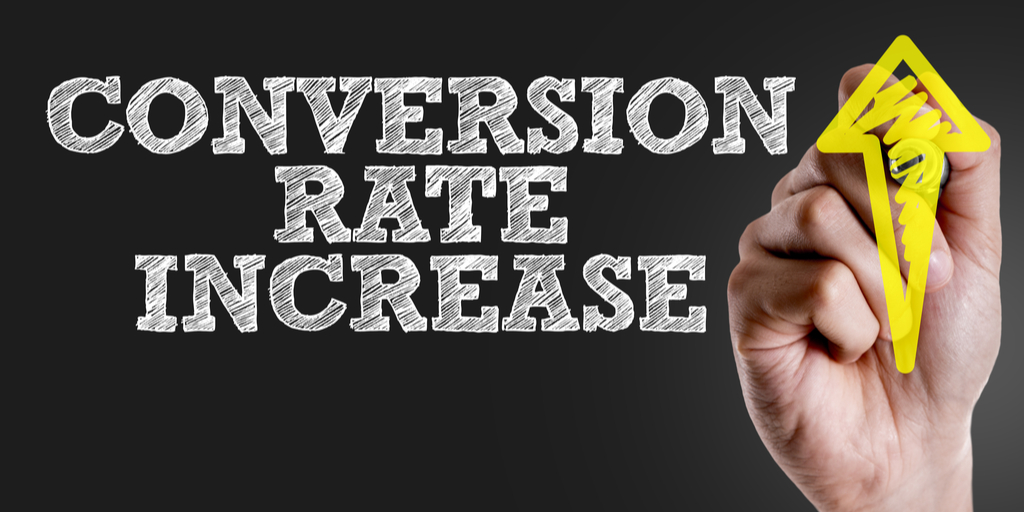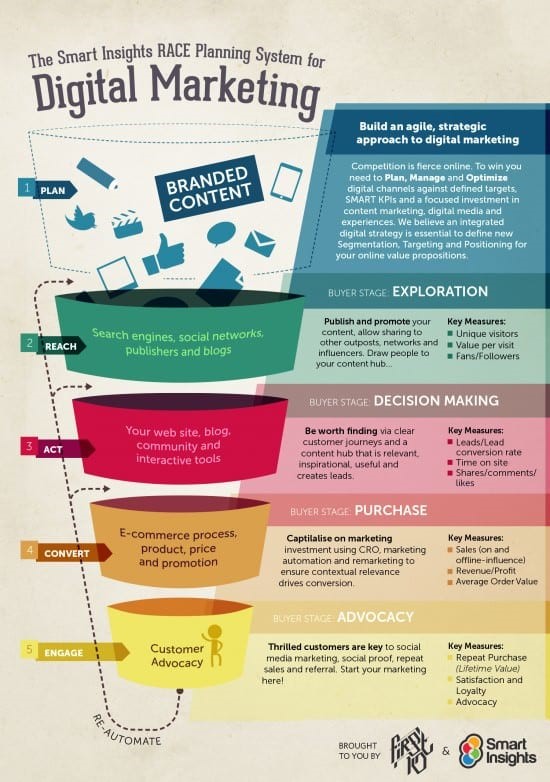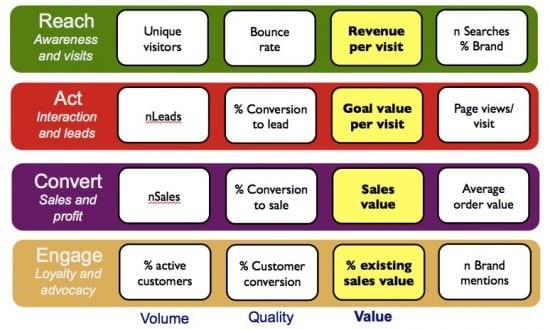
Using the RACE Framework for Your Digital Marketing – Part 3: How to Convert Visitors into Customers
Working on your marketing strategy can feel a lot like standing in line at the post office… Crunching numbers, digging into data, and suffering through long budget meetings—not exactly the most exciting times of your life.
But somehow it all seems worth it when the results of your hard work pay off—the sales come rolling in and the revenue goes up.
That's why we’re so happy to get to the 3rd article of our RACE framework series and finally focus on the fun stuff—how to convert visitors into customers—and what this will mean for your bottom line.
If you follow what we tell you, you will get sales—and LOTS of them. So let’s get to it.
The RACE Framework: A Review
In this article series, we’ve been talking about the RACE framework for digital marketing. Without implementing a framework to develop your marketing strategy, you’re wasting money and time on ill-advised tactics and tasks that may not be aligned with your objectives (if you even know what they are).
In Part 1 of this series, we introduced to you the first step of the framework, which is planning and also reaching more customers, essentially driving traffic to your web properties.
In Part 2, we discussed the 2nd stage, Act (Interact), which involves interacting with the target audience you just reached and engaging with them throughout the customer journey. This involves audience engagement that boosts lead generation and brand awareness.
As a review, RACE stands for the following:
Reach
Act (Interact)
Convert
Engage
Each stage of the RACE framework corresponds to a particular stage of the customer journey (or purchase funnel).
So you’ve got interested people looking at your products and visiting your website. You’ve invested time into planning, running ads, publishing blog content, engaging with your audience on Instagram, and more.
Congrats, you made it this far. It’s time to land the sale, and to do that, you must convert visitors into customers.
Landing the Sale: How to Convert Visitors into Customers
Once you reach more customers and interact with them to get them more acquainted with your brand and interested in what you offer, the next step of the RACE framework is to CONVERT visitors into customers.
First things first, how do you define a conversion?
This will depend on what your goals are. Ultimately, it’s the last step before you exchange money, but this may look different depending on your business structure.
Here are some examples:
- Call to book an appointment
- Book a reservation (online or via phone)
- Purchase a product from your online store
- Sign up for your membership program
- Accept your agency proposal
- Sign up for your free trial
- Become a paying monthly customer
- Complete a form (A lead conversion can also be integrated within the Convert stage and combine with the Act stage)
ATTENTION: If you have no idea what your conversion goal is, stop reading. This means you have not done enough planning and you don’t know your top-level marketing strategy. Read Part 1 first where we talk about the critical planning stage of the RACE framework. Or contact us so we can help you create a customized, data-driven growth strategy. Without this as your foundation, you’re building your marketing campaigns on a foundation of quicksand.
If you know your goals, then let’s talk about how to convert visitors into customers.
We could write books and volumes on how to convert visitors into customers. But for the sake of brevity and to give you some actionable advice, we’ve gathered our top conversion advice and distilled it into a couple of key steps.
Review Your Acquisition Process and Purchase Funnel
Start from the very first interaction a prospect has with your brand and move them all the way through to purchasing your product or service. Where are your prospects experiencing friction, frustration, or difficulty?
Any and all friction along the way can be improved to increase conversions.
But wait, how do you determine the friction and stuck points?
The goal here is to find all of the holes in your funnel. Then, plug up these holes and your conversions go up. Sounds simple, right? Well, it’s actually not that simple. It can get a bit complicated, but we will try to simplify it for you.
The first step to this is figuring out where your visitors are experiencing friction that could be hurting your conversions. Unfortunately, unless we look under the hood of your business and review your data, we can’t give you an exact answer here…
But, what we can do is give you some examples of typical holes you may find as you dig into your purchase funnel:
- Cart abandonment – Shoppers add items to the cart but never click to check out
- Shoppers are checking out but not finalizing the purchase
- Customers purchase once but never reorder
- Prospects click on your promotional links but never purchase
- Visitors book an appointment but then cancel prior to the appointment or don’t show up
- Your customers never refer your services or recommend your products to others
- Your subscribers open your emails but don’t click on the links
Hopefully, this gives you an idea of what to check for as you move through your own funnel. If you set up your analytics right, this should be as easy as checking each customer journey touchpoint and identifying any issues.
Here’s a brief (oversimplified) example. Let’s say your funnel consists of the following steps:
(1) Social post to promote lead offer on website
(2) User clicks on link
(3) User visits website
(4) User completes form and gets lead offer
(5) User sees email in inbox
(6) User opens email
(7) User clicks on link in email
(8) User visits website
(9) User navigates website
(10) User completes desired action
Analyze each step. So, for example, if in Step 3, you’re getting a lot of traffic to the form but only a small percentage are filling it out, your action item would be to test different forms, offers, design elements, and copy (one at a time) to find the sweet spot. If in Step 6, you’re not getting enough email opens, test various subject lines and email preview text to improve conversions.
Here are some other items you may want to test:
Pricing
Are your prices in line with the competition? Too high? Too low? Are you providing enough value for what you’re charging? Are you undercharging and giving the perception that your products are low quality?
Test different prices/packages and shipping options to find out what performs best.
Product Improvement
Is your product a perfect fit for your customers? Does it meet their needs and solve their problems? If your answers to one or both of those questions is “yes” but you have no data to back that up, your answers are worth nothing.
The only people you should listen to when assessing the viability of your products in the marketplace are your customers—not your hunches or your instincts (not even your mom).

How do you get reliable customer data? We’ve got a 2-part article series that will teach you how to do market research effectively. Hint: It’s all based on gathering data and NEVER relying on your own instincts.
Use this data to improve your products and increase conversions as a result.
Promotion Types
Are your promotions valuable to your customers? Can you add more value to your offerings and beef up your offer?
Your promotions may not be beneficial enough for your targets to pull the trigger. Test varying promotions and discounts to assess which one your audience responds to.
Website/Landing Page Optimization and Testing
As you’re analyzing your customer's purchase funnel for holes, you may find that your website/landing pages need optimizing. And this is a good idea.
Since 74% of conversion rate optimization programs increase sales, even if you’re satisfied with your conversions, how much more revenue could you earn if your conversions went up 0.5% or even 1%?
Conversion rate optimization (CRO) involves tweaking elements on your website and landing pages and then testing them to see if they improve conversions.
A/B split testing allows you to test 2 variations and analyze which variation performs better. For example, if we wanted to test which blog headline performed better for this post, we would split test 2 versions of this page (with a headline variation on each) and then send equal numbers of traffic to each page.
Now, before you run off to start tweaking and testing and wasting time, reflect back on your goals. Focus on which elements to test that will get you closer to meeting your current marketing strategy objectives.
User Testing
With User Testing, real, live human reviewers navigate your website and verbally report everything they’re feeling as they perform an action you assign to them. Users can report where they are experiencing friction or getting frustrated, or whatever is preventing them from making a purchase or completing a goal on your website.
Another option to monitor user behavior is to install Hotjar on your site. Hotjar provides heat maps and videos of users’ behavior on your site. Use these tools to uncover where your users are experiencing friction that is hindering their ability to convert.
Convert Stage KPIs – What to Track
It’s time to create your KPIs. What are you tracking during the Convert stage?
If you already have your strategy in place and you know which tactics to execute to fulfill your plan, the next step is to track them by creating KPIs (Key Performance Indicators).
Each stage of the RACE framework will come with its own set of KPIs, and your indicators may be different from another’s.
But to help you get started, here are some common KPIs to track during the Convert stage:
- Number of sales
- Conversion percentage
- Average order value
- Revenue increases
As a review, take a look at this image from Smart Insights that illustrates the KPIs based on volume, quality, and value.
The best way to track conversions is via Google Analytics or a sophisticated CRM that can track revenue. If you would like some help setting up tracking and coming up with KPIs, let us know here.
Convert Visitors into Customers – What You Need to Know to Get More Sales
In this post, we took a deep dive into the world of conversions, the third stage of the RACE marketing strategy framework.
Converting website visitors into customers involves uncovering the holes in your customer's purchase funnels, tweaking elements to plug up those holes by making changes, and testing to see what your audience prefers.
But WAIT…there’s more. Once you get a customer, your work is not done—that is, if you want them to buy again and become a loyal customer. In Part 4, we’ll discuss the 4th stage of the RACE framework, Engagement. This long-term approach is necessary to attract repeat purchases and foster a community of loyal customers who boost customer lifetime value and multiply your sales. We’ll see you there!



